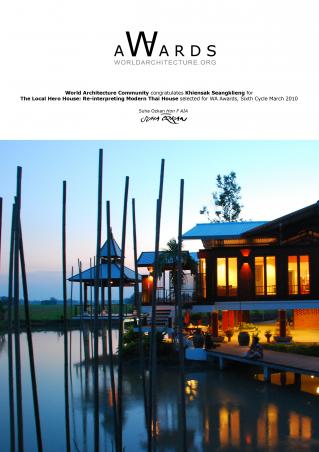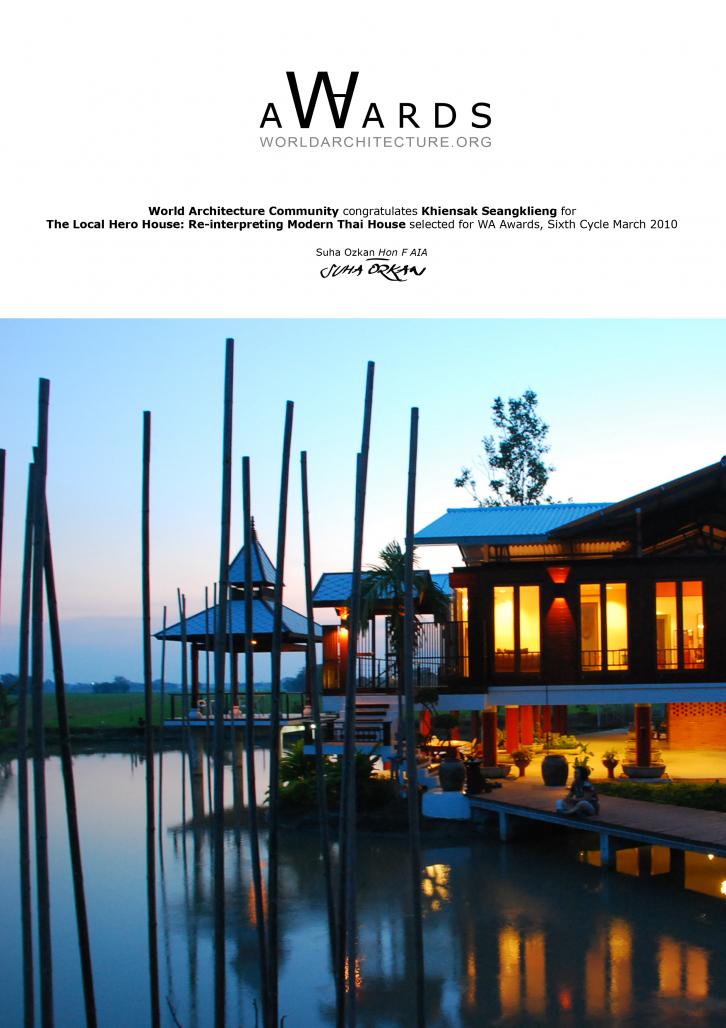When people speak of a traditional Thai house, they generally have in their mind’s eye an elegant, wooden paneled house on high posts with two or more buildings clustered around chan or central terrace through the centre of which grows a large, shady tree. Underneath the house may stand an ox cart, some agricultural implements and a low table on which the owners and their friends sit and chat. Within the compound are a variety of fruit trees, and a buffalo may be tied to a fence post. The house might be situated on the banks of a klong (canal) or river, or on the side of the road. As well as tending the fields, the family might also trade from their house (Chaichongrak et al, 2002).
Today such houses still exist but they are becoming hard to find. Often corrugated iron has replaced the traditional tiled roof and various additions have been tracked on any old how. Or, if recently built, they may serve simply as a stylish adjunct in the grounds of modern compound, or be the setting for a restaurant, where Thais or foreigners can come and savour for a while the delights of natural wood and beautiful proportions. In fact, many Thais do not appreciate them, finding them dark or poorly insulated and ill adapted to modern cities. For hundreds of years, however, they were the perfect dwelling. Standing in the midst of shady trees, near the owners rice fields, they used locally available materials, they were prefabricated and could be moved and re-erected. Raised high above the annual floods, they were also and breezy and, above all, beautiful.
This house is a holiday home for a family with two kids, and comprises a Thai-style pavilion supported by pillars on the innovative jar-footings. The whole idea of the project was created when architect was visiting the site. There, in front of the client, he imagined what later would be the transverse an idea of what was being proposed a resort house, a place where his family could invite friends over frequently.
This house was built with low-cost solution in the concept of re-interpreting modern Thai house. Architectural value is demonstrated through its integration and transformation based on the Thai wisdoms, and innovative use of passive design in tropical contexts. The house was created with an emphasis on family living and looks into the future of Thai-ness while not forgetting the past.
2007
2009
M.L.Varodom Suksawaddi
Pornsit Rattanasrithai
Hasaporn Poomkhum
Pairas Seangklieng
The Local Hero House: Re-interpreting Modern Thai House by Khiensak Seangklieng in Thailand won the WA Award Cycle 6. Please find below the WA Award poster for this project.

Downloaded 1400 times.
Favorited 3 times










